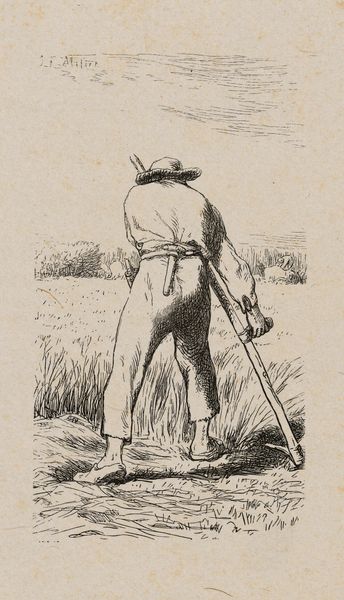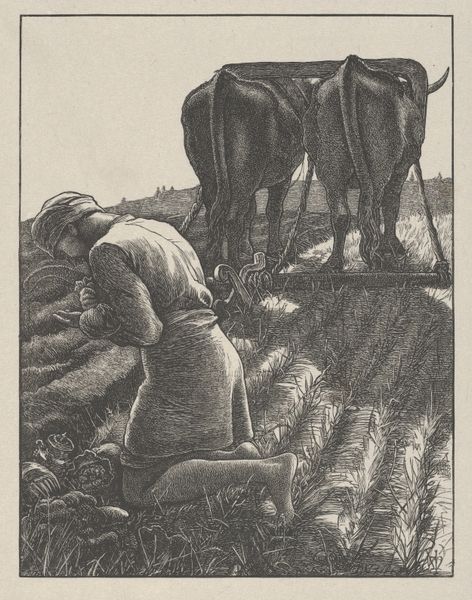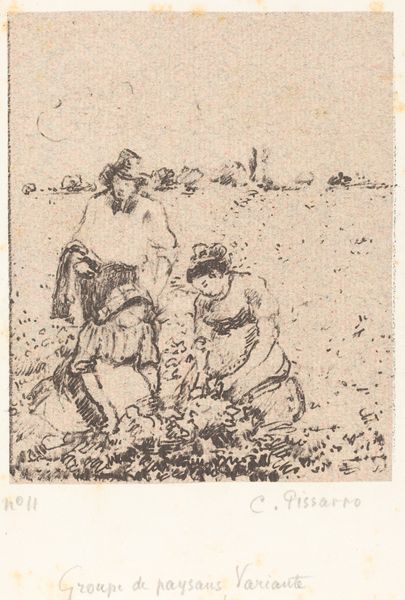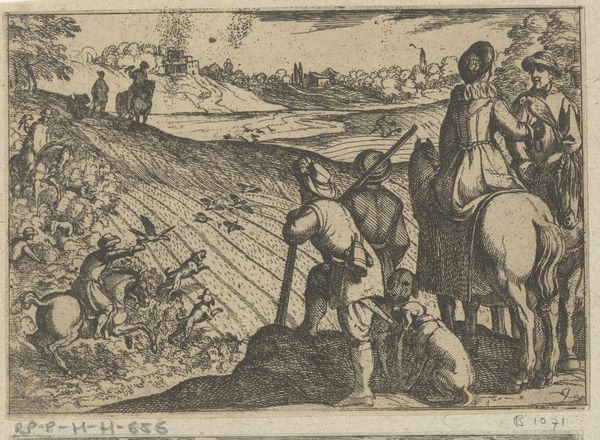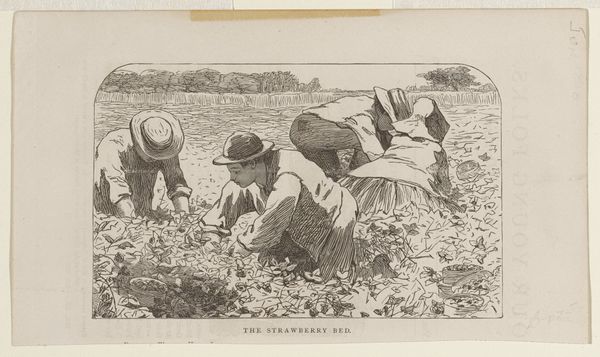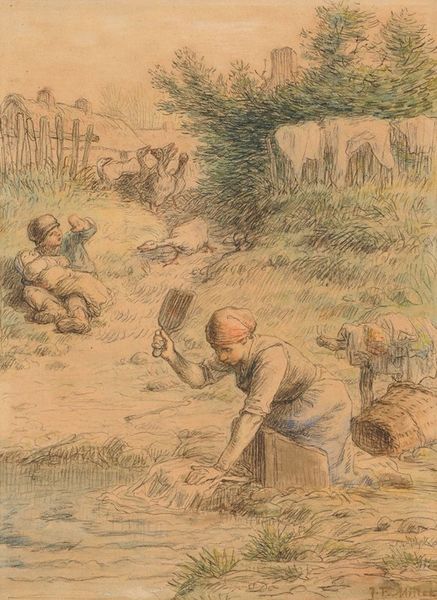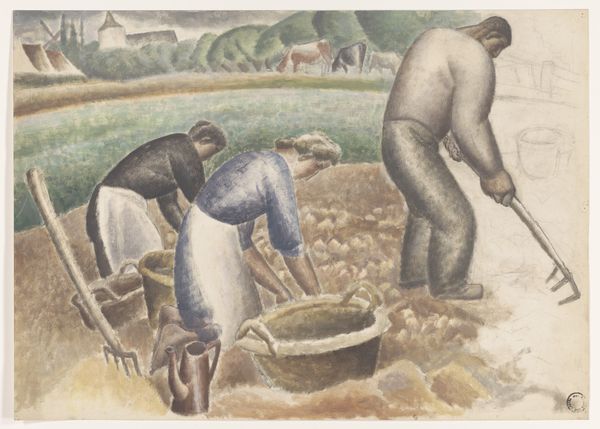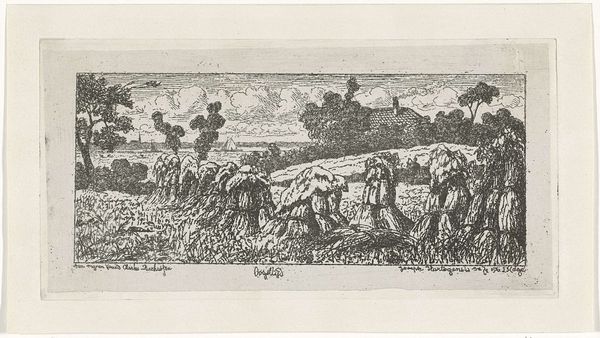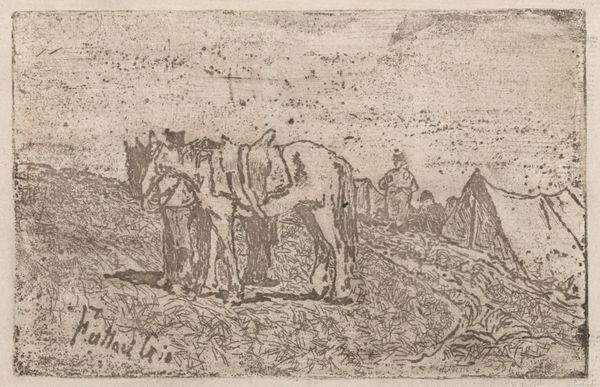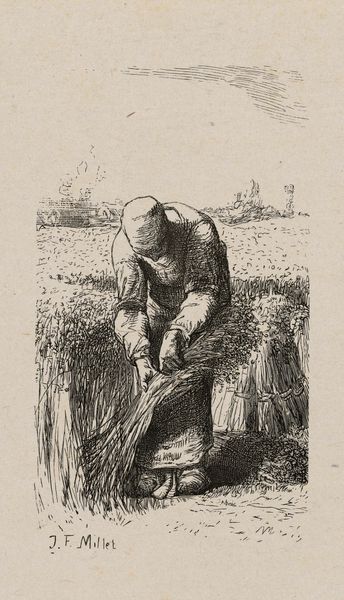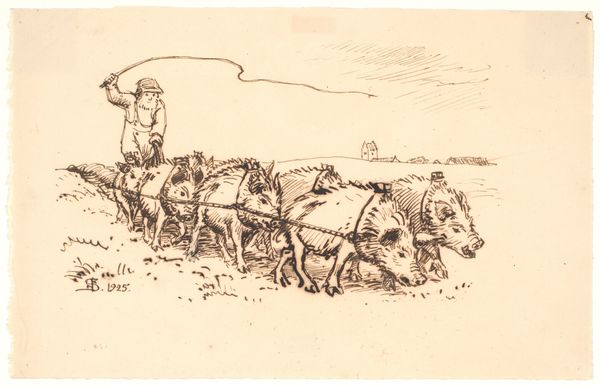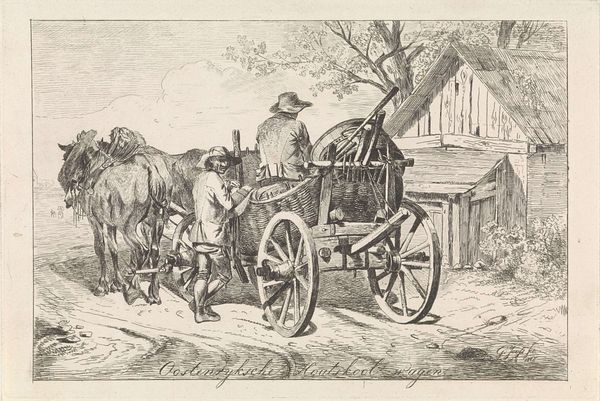
Copyright: Public Domain: Artvee
Editor: Before us is Camille Pissarro’s "La Charrue", created in 1901, seemingly with colored pencils. The soft hatching of the pencils creates a peaceful mood, but the perspective seems unconventional. How would you interpret the structure of this piece? Curator: Note the almost scientific evenness of Pissarro's marks: strokes, dashes, dots, which build into distinct registers. The even application yields at once to a tension: on the one hand, we are seeing two tonally coordinated halves of the composition, above and below the treeline at center. However, one cannot ignore the jarring effect of a horizon line placed almost at the vertical center of the plane. Is it the absence of conventional perspective that defines the subject here? Editor: That's interesting! I hadn't considered how the horizon interacts with the subject to flatten the image, especially alongside those strong near/far color correspondences between earth and trees. Curator: Yes, and one may consider the subject of labor as rendered through the colored pencil, which at once flattens the subject via the material index of line work and suggests the potential of rendering the earth anew, layer upon layer. Would you agree that, given these structural considerations, this piece can be read as an anti-pastoral work? Editor: I think I would. Viewing it this way, with the flattened perspective and emphasis on materiality, allows one to reconsider what, precisely, labor yields, or the extent to which its yield is representable. Curator: Precisely. The artist’s choice of medium subverts expectation, and prompts an investigation of line. Editor: I appreciate the way you tied the structure of the piece to its possible thematic implications! Thank you.
Comments
No comments
Be the first to comment and join the conversation on the ultimate creative platform.
